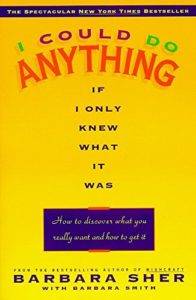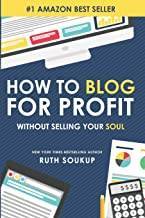Do you know when a buyer is ready to close a sale and take your product or service?
Do you know how to listen for these four signals?
More importantly, do you know how to tune in and lead the customer to the sale?
Why Everyone is Really In Sales
I know what you are thinking. You just don’t like sales. You are NOT a salesperson. You basically just want to be a cake decorator and decorate amazing cakes out of your own home—living happily ever after. Or you just want to be a dog groomer or a freelancer graphic designer. Period. No sales. Fine, but…
If you really want customers or clients, you will need to sell. If you don’t want to sell, you will have to outsource it to a third party marketer or another freelancer who does like sales. When I coach clients, who are trying to grow their small businesses, and they tell me they really don’t want to sell they just want to write, bake, design or what have you—I have to be the bearer of bad news. You are still in sales. You are a graphic designer and a sales professional. You are a dog groomer and a sales professional.
Really, everyone is in sales at some level—even employees at a regular job. How do you think they were able to get the job? They were able to convince the recruiter at the interview that they were the right candidate for the job. They were able to “sell” the recruiter on their education, expertise, work experience, and at some level their appearance and personality. The “right sales conversation” here was a mixture of answering the interview questions and providing a well-written, targeted resume.
Why Being In Sales Shouldn’t Be Such Bad News
When sales are done correctly, they are really about having the right conversation and then moving it forward from there. It is a combination of knowing what to say and how to listen. More emphasis should be put on listening first and then knowing what to say.
What Are Four Buyers’ Signals to Look For?
Throughout any sales presentation there should be four signals that you will want to be listening for, watching for, and/or anticipating. They are the customer is:
- Being silent – This would be a blank look or not saying much.
- Interrupting with questions – These can be objections or questions of interest.
- Beginning to suggest ownership – This would be when the customer starts to use “my” or “mine” when discussing the product or service.
- Mentioning minor details – This could seem like small talk about the size or the color or it could be a subtle suggestion that they are ready to buy.
I will explain these signals more in detail below.
The customer is silent. – This may not seem like a buying signal, but if it is in the beginning of the presentation, the customer may be waiting for you to prove that you have the answer to what he/she is looking for in a product or service. In this case, silence is a good thing and proves that you have answered all of the customer’s questions, so you may move towards closing the sale.
The customer interrupts with questions. – This can actually be a good thing—depending upon what the questions are. Now if these questions seem more like objections, such as: “Will I even use this product?” or “How often would I have to clean it?” then try to rebut the objections.
However, if the questions are things such as, “Will my product arrive in less than two weeks?” or “What is the fastest this product can be delivered?” then answer it quickly. Usually questions about delivery dates, assembly or where the product will be shipped from are an indication that the customer is ready to buy. Only if the customer seems skeptical or somewhat cool when asking any questions, do you need to start moving towards the sale. Address objections first and questions second.
Questions about installations, warranties, and money back guarantees also indicate a desire to buy. If the customer sounds doubtful or cool when asking these questions, look out. You may need to address that first.
The customer is beginning to suggest ownership. – When the customer begins using words such as “mine” or “my” or “our” for a family, you need to move quickly to the sale. Also, the customer may voluntarily tell you that the product is what they will need to weed their garden in about a month. Agree with them, then confirm these statements by asking for the sale.
The customer is mentioning minor details. – When your customer starts talking about the features or minor details of the product, he/she may be ready to buy. “Is there a charge to upgrade to the deluxe in the future?” or “Which color works best with my olive wallpaper?” are small details to address. However, answer the questions without elaborating too much. Too much talk could confuse the customer, and you may lose the sale at this point.
In Conclusion
Making sales is just another form of making conversation. Get out there and have some very good talks. Just don’t forget to listen first for any buyers’ signals.
My Coaching Two Cents’ Worth
Sales are probably the biggest hurdle that new business owners have to get over. Just think back to the times when you bought something and had a good sales experience. The sale probably came from someone very knowledgeable, but also very loyal and enthusiastic about the product or service.
It would be easy to duplicate that, don’t you think? Especially, if it is your own product or service.
Now, of course I have to get you to this point. So, if you haven’t quite brainstormed what you want your life and work to look like in the second half of your life, we have to get you there first. However, these are great tips for the seasoned entrepreneurs that have hit a slump. As always I’d love to hear any thoughts or comments below.



















